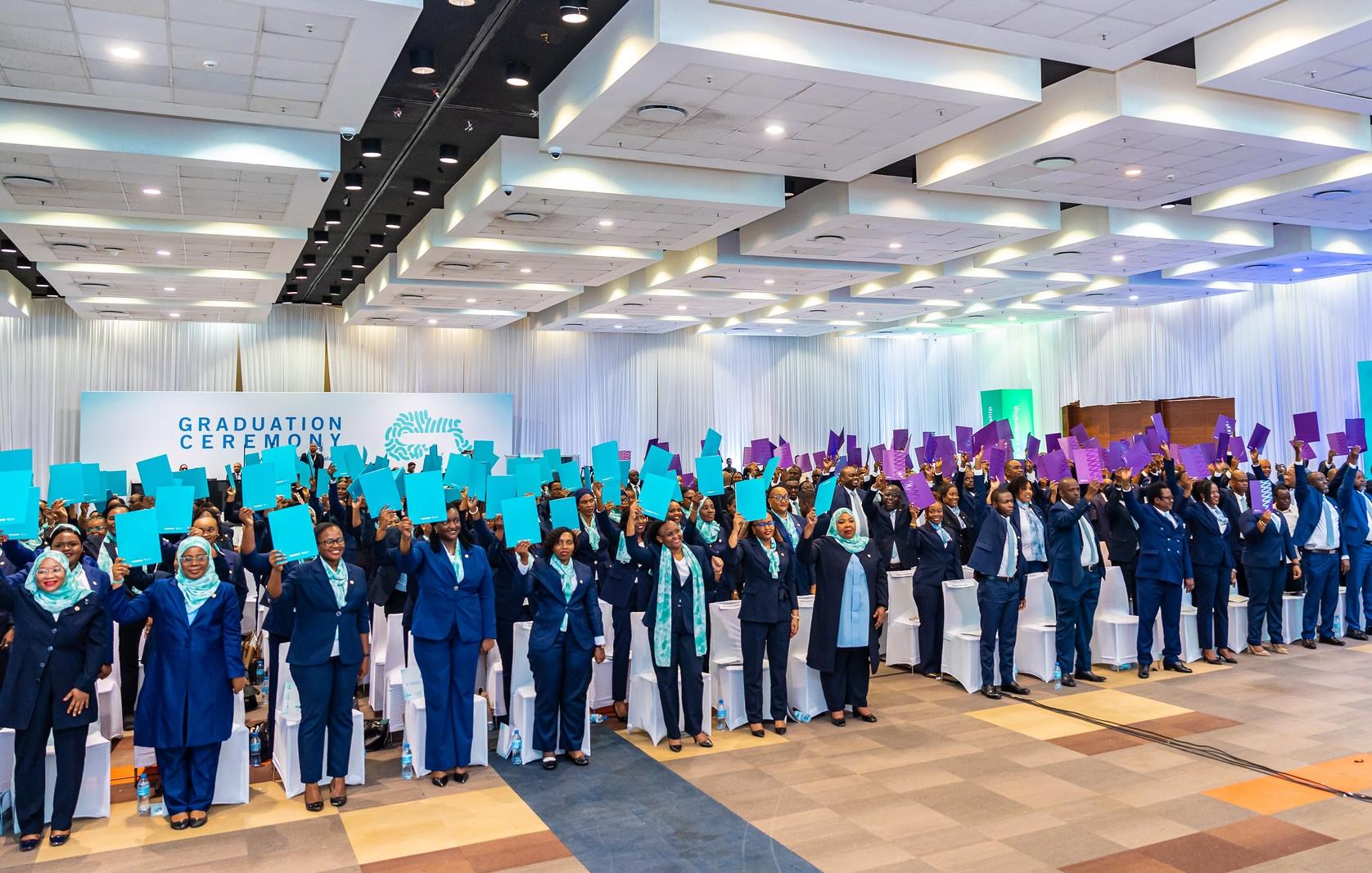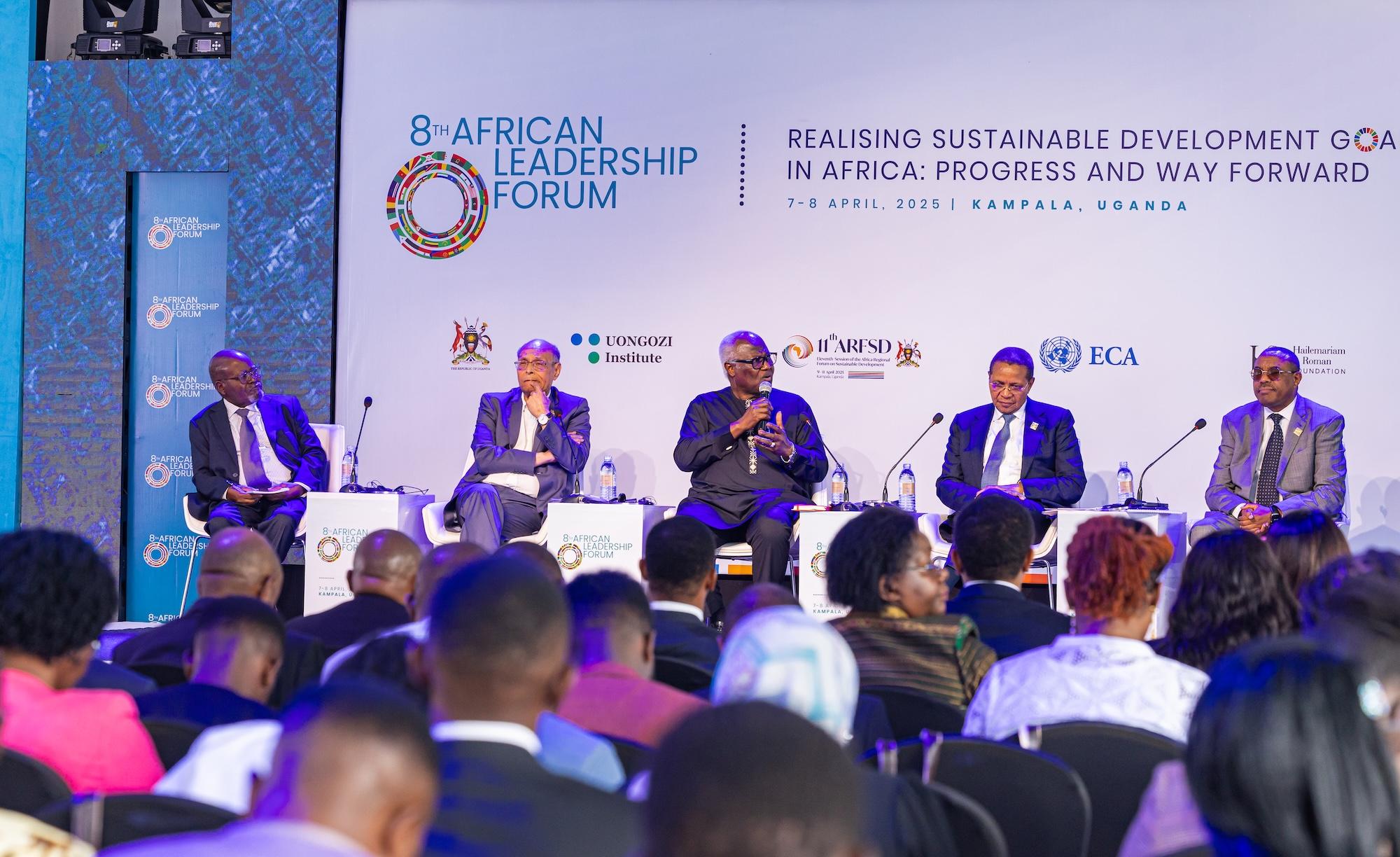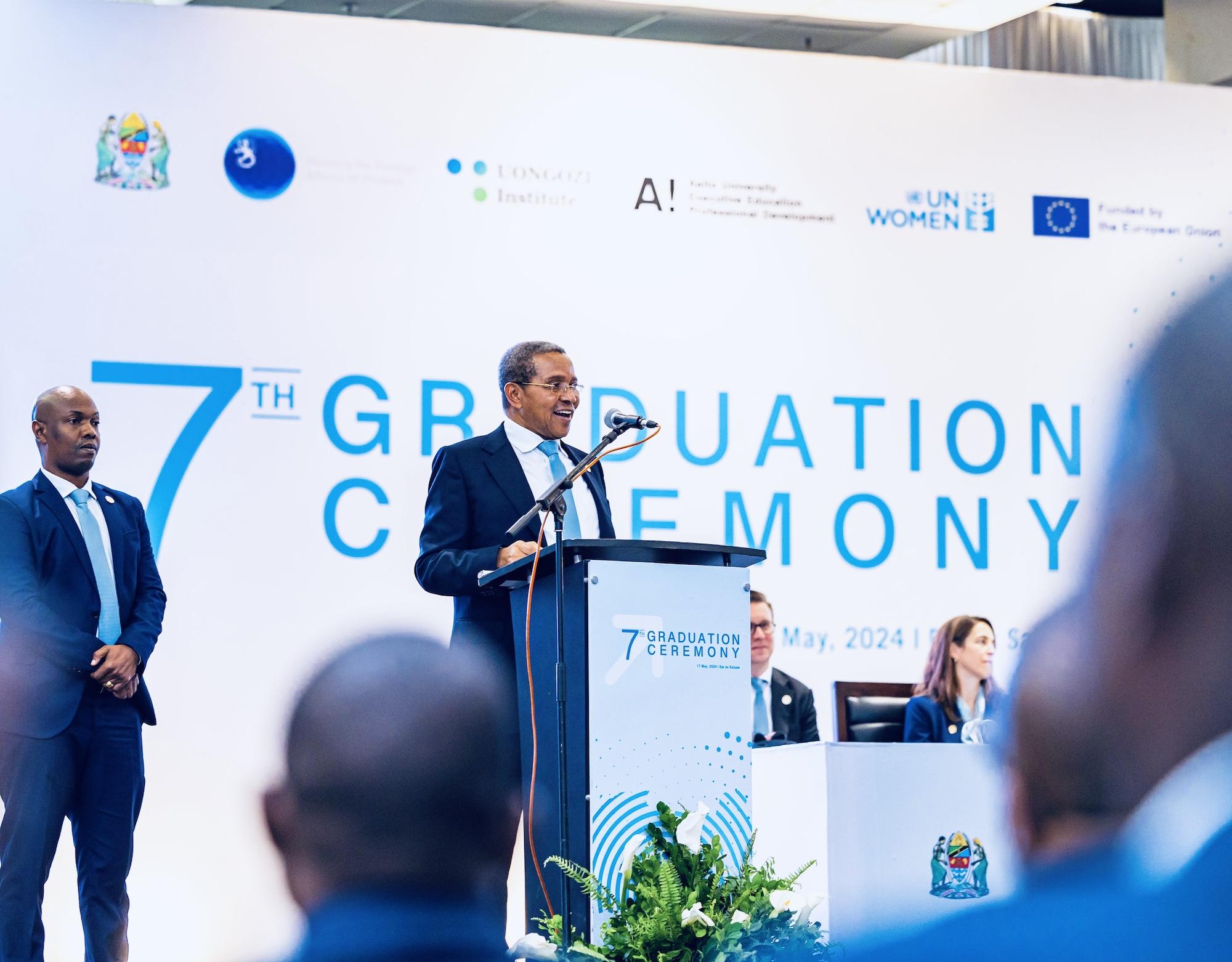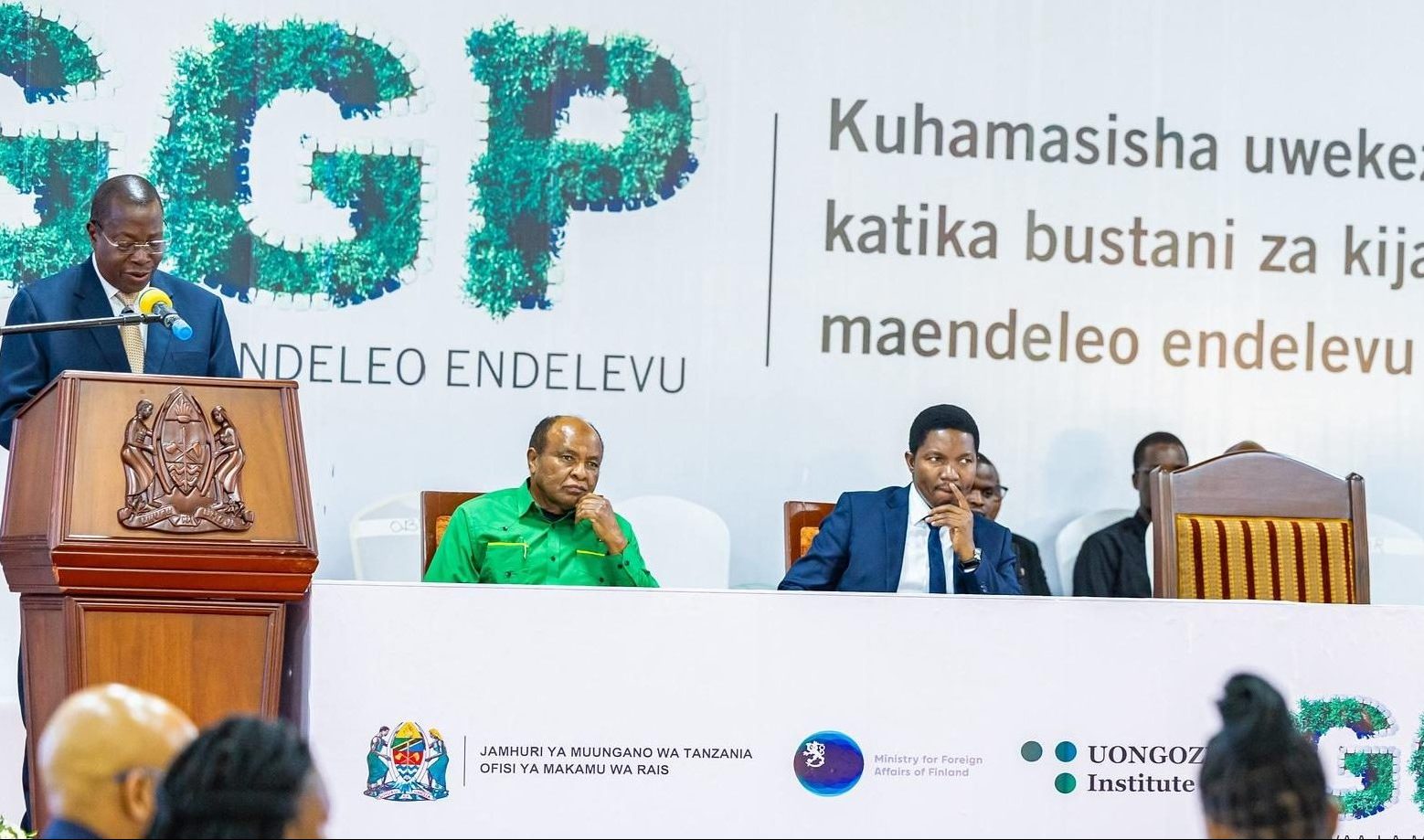By Jambo Ramadhani
On 17 December 2021, I participated in a virtual forum, organised by the Embassy of the United Republic of Tanzania in the United States of America (USA), UONGOZI Institute and Arizona State University. The theme was “Strengthening partnerships between Tanzania and USA to boost readiness for the fourth industrial revolution”. The discussions from this forum alongside Tanzania’s agenda to industrialise, have inspired me to share my opinion on how Tanzania can leverage fourth industrial revolution (4IR) technologies for its socio-economic transformation.
Many African countries, including Tanzania, were on the periphery of the first three industrial revolutions that fundamentally changed the way humans produced things in the West. The application of information and communication technologies to fundamentally change industries and wider society (the 4IR), however, within Africa has been spearheaded by the rising ICT sector, ushering in the possibility for the continent to capitalise on 4IR opportunities. Contrary to the previous industrial revolutions, the 4IR is highly inclusive; it is associated with disruptive technologies and trends that are changing the way we live, work and relate to one another. These include artificial intelligence (AI), the Internet of Things (IoT), cloud computing, cyber security, 3D printing, cyber-physical systems, genome editing, blockchain technologies, big data and analytics, virtual reality (VR), augmented reality (AR) and hybrid or mixed reality (MR).
History of industrial revolutions

An African Development Bank report[1] revealed that Africa’s large population, anticipated to double by 2050 to 2.4 billion, offers both a source of data to feed innovation in 4IR technologies as well as a valuable market and one of the largest workforces on the planet. As a consequence, IoT market alone is projected to reach a value of USD 12.6 billion by 2021.
Tanzania has the great potential to leapfrog in terms of technology and unlock the opportunities of the 4IR. The country is already in an era of digital transformation with 25% of its population now connected to the internet. Some 83% of the population has a mobile connection, thereby creating a strong network landscape. This facilitates growing internet penetration with opportunities for mobile money, social media, and e-learning and other digital opportunities being adopted.
Our East African nation has also started laying the foundations for the realising the opportunities presented by the unfolding 4IR by investing in digital infrastructure. We have seen initiatives such as the establishment of the National ICT Broadband Backbone, Universities’ Innovation and Technology Hubs, Tanzania Artificial Intelligence Lab, and Blockchain Tanzania Community reflect a growing demand to increase the national digital eco-system. These initiatives are already recording positive impacts in terms of launching new innovations and start-ups.
Public and financial institutions, such as the Bank of Tanzania (BoT), Commission for Science and Technology (COSTECH) and the National Microfinance Bank (NMB), among others, are also playing a part in promoting the 4IR. More public, private, third and knowledge sector organisations, however, will need to join hands to perform the tech-leapfrog necessary to more broadly embrace the 4IR.
Despite the continuous efforts to leapfrog the 4IR in Tanzania, the challenge related to the regulatory framework governing the 4IR, should not be underestimated. The uptake of the 4IR requires significant changes in the related regulatory framework. The founder and Chairman of the World Economic Forum, Klaus Schwab[2], stated that organisations across every industry have reconsidered and readjusted their traditional ways of doing things as a result of the 4IR; and Tanzania is not the exception. The country will therefore need to ensure it maintains the necessary regulatory environment for 4IR innovation to thrive.
Infrastructure challenges, including sufficient connectivity, need to be addressed to address technological ‘bottlenecks’. Improving the physical connectivity of fiber-optic networks is one of the critical requirements in relation to upgrading technology on the continent. In Tanzania and across the wider continent this improvement in tech infrastructure enables the digitally ‘underserved’ to be reached and lower their internet unit.
Re-skilling and up-skilling of the workforce is also vital for the success of 4IR in Tanzania. Consequently, the potential of existing Institutions, such as the Nelson Mandela African Institute of Science and Technology in Arusha as well as the Dar es Salaam Institute of Technology should be maximised. The public, private and knowledge sector have the opportunity to join forces to create a pipeline of talent through primary, secondary, tertiary and higher education. This will not only close the ‘skills’ gap but make a wider contribution to developing the nation’s science and technology potential. Moreover, combining ‘hard’ and ‘soft’ skills will create a workforce that has the full set of competencies required to function in the 4IR where a combination of these attributes becomes increasingly important.
Leading political economists, such as Njuguna Ndung’u and Landry Signé[3], have highlighted the potential for Africa to actually lead the 4IR. They observe how Africa can become a continent of digital citizens, with a workforce that is skilled and empowered through the 4IR and where a young generation especially can fully enjoy the transformative benefits of employment in a new world of work.
Looking to Tanzania, while recognising the progress to date, for the nation to fully leverage the transformational potential of the 4IR, the following should be considered:
Improving regulatory frameworks
An agile and flexible policy and legal framework that sets a conducive environment for innovation in the 4IR is key to success. It is worth noting that, the regulatory framework is no longer a pure jurisdiction of the government in the 4IR agenda. Thus, policymakers may consider, in some instances, how development/innovation could occur and regulation to then follow. Likewise, a nimble-oriented policymaking approach is crucial in advancing the 4IR agenda.
Strengthening digital infrastructure
Disruptive 4IR technologies rely on connectivity. Therefore, fast, affordable and dependable internet connectivity is essential. This will not only create the critical operating environment for domestic development but by closing the internet connectivity and access gap with advanced economies, more African states will be able to harness their tech potential to improve their commercial capability and better compete with other parts of the globe.
Enhancing workforce skills
Up-skilling and re-skilling to create a workforce able to exploit the 4IR and remain competitive is crucial. Beyond promoting the ‘hard’ tech capabilities, however, soft skills development will increasingly be needed within Tanzania’s labour market. Skills that allow people to interact effectively with others (e.g. emotional and social intelligence). The ability to interact, communicate and work with a range of people are some of the essential human ‘soft’ skills that technology cannot replicate. Further and higher educations, especially, therefore have the opportunity to offer courses that integrate soft, technical and business skills capable of helping create more agile, high performing and well-integrated teams within all organisations.
Strengthening PPPs and multi-stakeholder engagement
The Swahili saying Kidole kimoja hakivunji chawa (One finger alone cannot kill even a louse) fittingly applies to the 4IR where Government cannot ‘do it alone’. Empowering the private sector to take a leading role is absolutely necessary. Government can play a crucial leadership and enabling role but the private sector organisations faces changes that impact all aspects of their business. They will be forced to reexamine their practices in order to survive – and thrive. Responding to these changes may also require the private sector to explore new collaborations with the government and wider stakeholders (both national and international) in the critical area of research and development. In this case, the Government of Tanzania may wish to utilise its bilateral cooperation agreements with other countries, as well as, the existing regional initiatives to promote collaborations.
The 4IR has the transformative potential to re-shape Africa’s socio-economic development. This, however, depends on the capacity of Tanzania and other countries on the continent to create the right foundations for this development to happen. With the right economic, industrial, educational and social policies, however, the continent could leverage the 4IR to help shape a more equitable and sustainable development future for its citizens.
[1] African Development Bank Group. (2019). Potential of the fourth industrial revolution in Africa: A study on unlocking the potential of the fourth industrial revolution in Africa. African Development Bank.
[2] Schwab, K. (2017). The Fourth Industrial Revolution. Penguin Random House, London.
[3] Ndung’u, N., & Signé, L. (2020). Capturing the Fourth Industrial Revolution: A Regional and National Agenda. Foresight Africa 2020 report. Brookings Institution.






